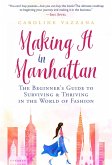The role of presentation and personality in interactions has been debated, downplayed, or enhanced but never ignored. As women mark their presence in the workspace, the interplay of feminism, presentation, and personality will only strengthen from its previous baseline. The urban Indian woman is exposed to, experiences, and responds to style and fashion stimuli through her transition and transformation as she goes through various life stages. As India moves from developing towards developed status, the role of women in the workforce is noteworthy. The 8.57 MN (Censusindia.gov.in, n.d.)(For details, refer to Table 1-1) married working women in urban areas form a sizeable consumer cohort with discretionary income and promise high sales potential. Working women represent 21.79% of the total labour force (The World Bank, n.d.), but the number of women in higher education is growing, comprising 53% of undergraduate, 69.6% of M.Phil., and 41.8% of PhD degrees (Catalyst.org, 2019; MHRD, 2019). Thus, The study assumes importance as gender representation in the workforce increases; this cohort will substantially contribute to fashion and lifestyle sales. Interviews related to married working women's dress decisions are expected to reveal narratives on disposable income, materialism, success in the workplace, and desire for style and fashion. These may help her feel confident about her style, succeed and move forward in the workplace. Desire and free choice have been conditions of thriving fashion systems (Blumer, 1969; Miller, McIntyre, & Mantrala, 1993; Sproles, 1974; Vannini, 2007). Fashion agency and fashion desire of young women drive fashion pursuit, acquisition, and consumption.








